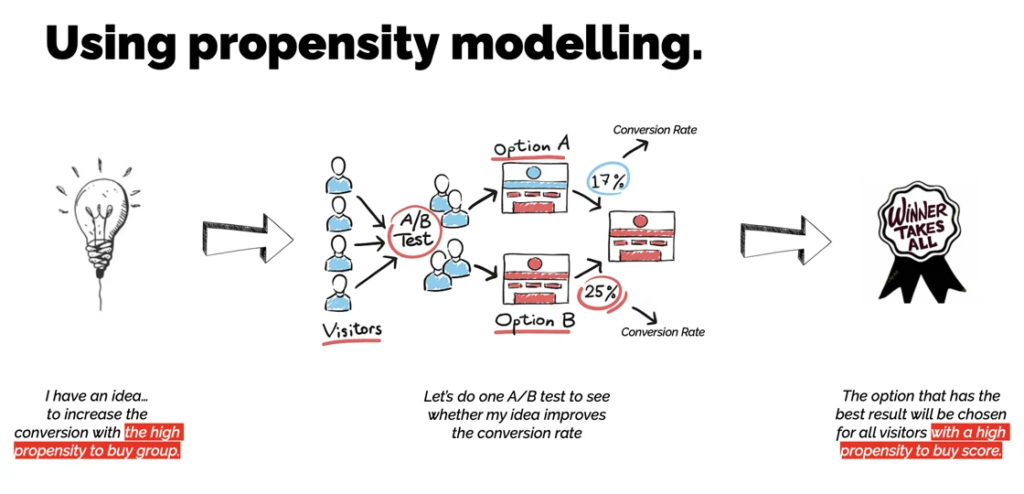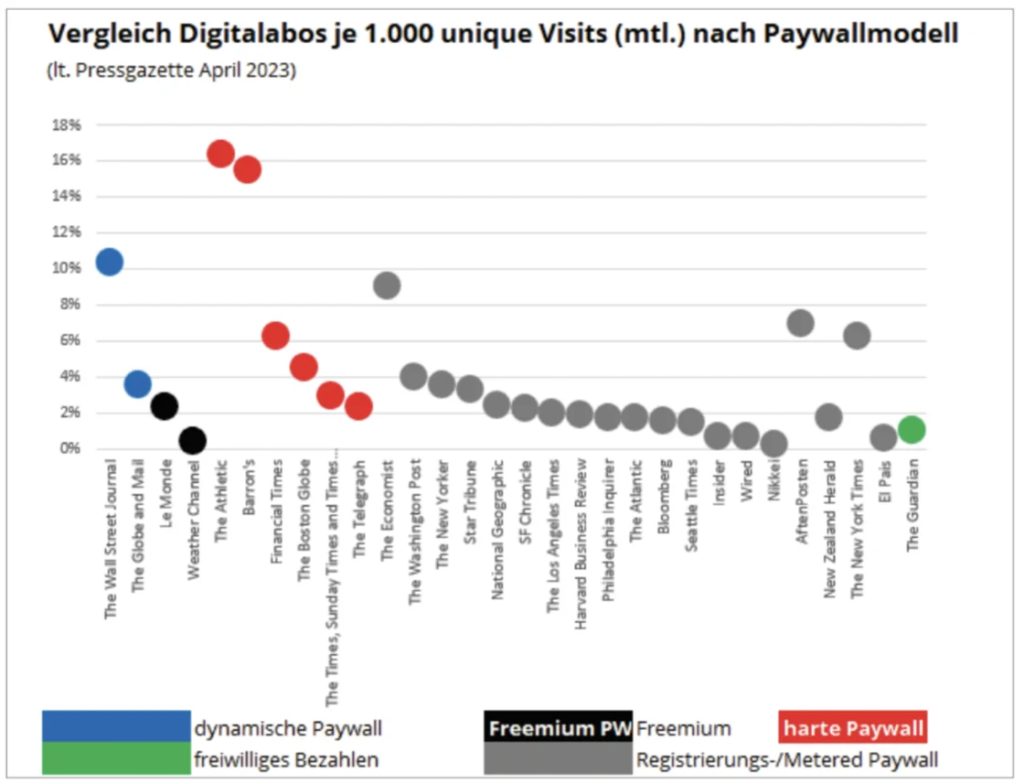

You're reading The Audiencers' newsletter #16, sent out on June 14th, 2023. To receive future newsletters straight to your inbox every two weeks, sign up here.
In The Audiencers’ Newsletter #16:
- 🇵🇹 From Cascais with love: We headed to FIPP’s World Media Conference
- Beyond the human mind: Mediahuis’ propensity model
- Aftonbladet starts using AI-generated summaries of articles: “We’re still in a testing phase, but the results so far look promising” says Martin Schori.
- What explains subscription conversion success? A new formula and study seeks to find an answer
- Recommendations to add to your reading list: from The Audiencers & friends
🇵🇹 From Cascais with love
It’s not every week that you get to fly to sunny Portugal for work. But last week we headed to the FIPP World Media Congress to speak with ELLE magazine on how they’re using a dynamic paywall and continuous optimization to increase conversion rates.
And I think it’s fair to say that it was a popular session… 😅

Couldn’t make it to Cascais? Or maybe you did but couldn’t fit in the room! Not to worry, you can find our summary here and the slides here.
Beyond the human mind: Mediahuis’ propensity model
Continuously optimizing conversion rates through testing is an essential part of a digital publisher’s subscription strategy. However, there are a few limitations to this method:
- It’s highly manual. And the more complex the subscription economy becomes, with ever more technologies to add to a publisher’s tech stack, the more manual effort will be required
- It’s a very slow way to find what is really working and what is not because you can’t test all ideas at once. In a rapidly changing digital world of subscription economy you don’t want to be slow in making changes
- The winner takes all in A/B testing, it leaves no room for personalization and differentiation. What works for young people might not work for older people, and visa versa. Are you willing to leave behind a group of people because they don’t convert in the same way as the majority?
The solution?
Propensity modelling, something that Mediahuis has been using to analyze reader behavior and put this information to use in predicting a new reader’s likelihood to convert. The idea is that this model becomes more intelligent over time as it collects more data and learns from experience, being able to make predictions with increasing levels of accuracy
You can then put this information to use in building personalized reader journeys that best convert and retain your readers whilst also saving time and resources within your company.

A case study example from Mediahuis:
They gave “high propensity to churn” subscribers a call, increasing retention by 14.17%. This reduces time and resources by only calling subscribers who have the highest propensity to churn.
Those with a “medium propensity to churn” were sent a personalized email with a video from the editor-in-chief, sharing how subscription is valuable for democracy. This increased retention amongst these readers by 8.99%.
Whilst those with a “Low propensity to churn” were left alone, meaning the publisher saved time and resources.
> Find the full article, including how you can get started with this model, on The Audiencers.
Aftonbladet starts using AI-generated article summaries
The Swedish daily newspaper, Aftonbladet, recently integrated collapsible boxes at the top of their articles. Titled “Quick Version”, these formats share a summarized version of the article generated with the support of the AI tool, ChatGPT.
“Our development team has built our own tool, integrated into our CMS, based on OpenAI’s API. We’re currently in a phase of testing,” says Martin Schori, Deputy Editor-in-Chief and Deputy Responsible Publisher at Aftonbladet.
After writing an article, a reporter can choose to have it summarized by checking a box in the publisher’s CMS tool. This summary is then reviewed by an editor. The results so far look promising, Martin Schori explains.
“VG, in Norway, has been using this tool for a while, finding that a large percentage of those who use this ‘quick version’ are younger readers. Not only this but, in many cases, this summary has led them to read the article in full, something that one might not expect,” says Martin Schori.
The idea behind the quick versions is to offer multiple reading options – “perhaps someone is in a hurry, wants an overview, or is only slightly interested in the topic. The plan is to keep testing this idea for a while and then roll it out more widely.”

*Note that this screenshot is translated from Swedish by Google
💡 Best practice: notice the tool tip at the bottom, informing readers that the text was written with the support of AI tools. This kind of transparency (that should also be applied to data collection) helps to build trusting, close relationships with readers.
What explains subscription conversion success?
Markus Schöberl, editor and publisher of pv digest in Germany, shares his analysis of the factors influencing conversion success based off his own benchmarking metric and a ranking of the best subscription news brands published by Press Gazette.
Press Gazette’s ranking measures the conversion success of paywalls by the number of unique website visitors, presenting the figure as a percentage value (subscribers in relation to website visitors) with values for 23 English-language premium offerings and 7 selected prominent non-English media, with results ranging from 16.4% (The Athletic) to 0.2% (Nikkei).
The article explains some of the potential factors that set apart newsbrands with higher conversion rates:
- The amount of time that a publisher has had a paywall in place, i.e. maturity in the digital subscription market
- The brand reach – for instance national titles seem to have added advantages over local brands thanks to a larger potential audience and more money for technology and subscription marketing than local papers
- The publisher’s overall business model, with those publications trying to generate digital advertising revenue alongside subscriptions, it’ll be harder to be at the top end of the reader revenue market compared to a publisher replying entirely on paid content
- Potentially, the paywall model too…
Does the paywall model impact conversion success?
“Last November, our (smaller) study gave us the impression that hard paywalls achieved the highest conversion rates, and that metered paywalls tended to achieve better rates than freemium models. In the Press Gazette data, metered paywalls are the most common (17 out of 30 cases), meaning it’s not surprising that both the lowest and one of the highest placed publishers employ metered paywalls (Nikkei and The Economist).
Moreover, Press Gazette’s list only includes 2 freemium paywalls, making statistical statements impossible. Nevertheless, we can read from the graph below that paywall model could well be a systematic cause of exploitation – hard paywalls achieve the highest values and metered paywalls achieve higher values on average than freemium models or voluntary pay.”

> Dive into this subject and analysis of the conversion success ranking in more detail in Markus’ article on The Audiencers.
In-house content to read…
Content from The Audiencers…
- Le Parisien’s new homepage: optimizing editorial and conversion simultaneously
- Ask the experts: how can you make newsletters valuable in a reader revenue model?
- The Right Message: Subscriptions, Paywalls and Prospect Theory
…and recommendations from elsewhere
- The Innovation in Media 2023 World Report launched last week – “The 15th edition of the Innovation in Media World Report explores the five major changes transforming the media landscape: generative AI, Gen Z engagement, new business models for publishers, emerging content formats, and the power of print”
- The Economist’s journey to become a digital-first brand
- Media companies try to meet young readers where they are
Have a great week!
Madeleine
The Audiencers’ newsletter: from professionals to professionals
Sign up to our newsletter – real-life examples, expert points of view and inspirations from publishers around the world to help you do your job better. Sent every two weeks.


